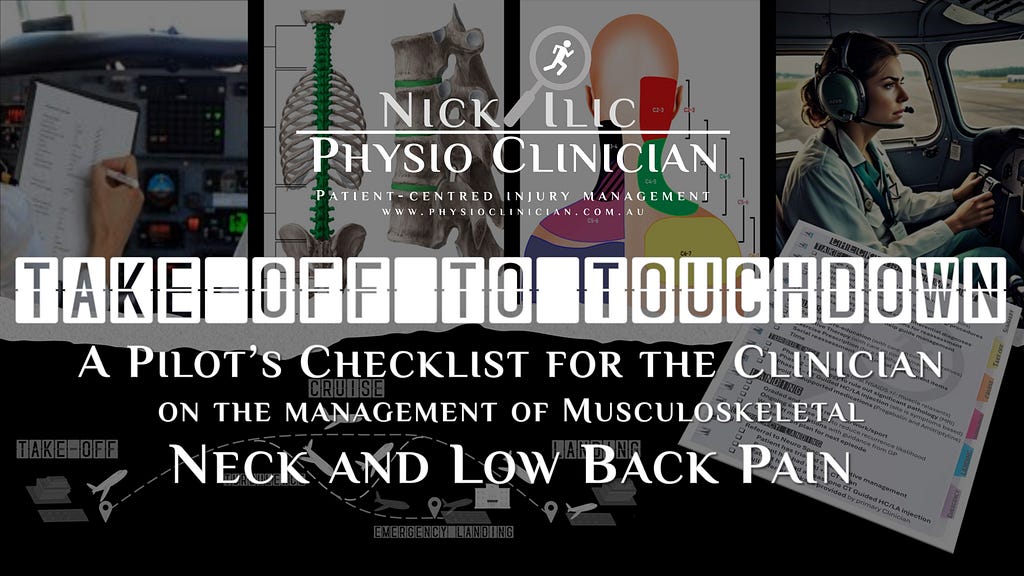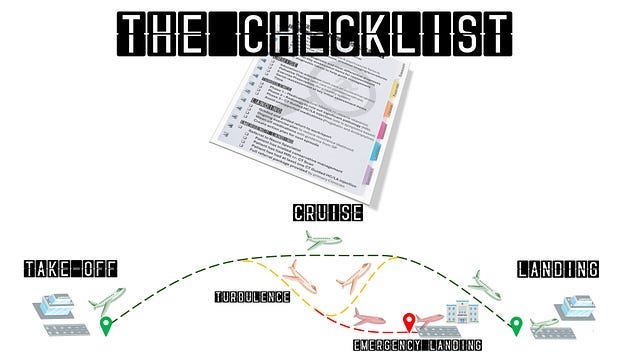Take-off to Touchdown | A Pilot’s Checklist for the Clinician on the Management of Neck and Low Back Pain
This post contains highly valuable, evidence-based insights and clinically tested recommendations for managing this condition. It’s based on years of experience in the clinic and real-world results.
To access the full post, including detailed clinical reasoning, key takeaways, and practical recommendations, subscribe to my Substack as a paid member.
Your support allows me to continue sharing quality, experience-backed physiotherapy insights that cut through misinformation.
☕ Prefer a one-off thank you? Buy Me a Coffee.
This post is a guide only and should not be taken as medical advice. It does not replace assessment and recommendations from a registered and regulated healthcare professional.
From Barrel Rolls to Smooth Landings: A Lesson in Broad Perspective
Many moons ago, in a land far far away, I was flying Plastic Parrots (CT-4 Airtrainer) and Mudry CAP-10 aircraft through the skies above Tamworth, NSW, Australia.
Performing barrel rolls, loop the loops and spin recovery training as part of Basic Flight Training School (BFTS) for the Australian Defence Force.
If you haven’t noticed, I’m not a pilot, therefore you’d guess things mustn’t have gone well — which is a good guess.
Turns out I could take off fine, buzz around upside down and inside out, recover from a stall and spin, but for the life of me: I could not land.
I’d bring the aircraft down towards the runway and once I got to within 10m of the ground, I just couldn’t get the thing down. This was an extremely stressful time for me, the more I concentrated, the worse it was. BUMP BUMP BUMP, and then I’d finally ground the thing. They’ve since retired CT-4s from BFTS, I’m pretty sure it was because I wrecked all the undercarriages beyond repair.
It wasn’t until I was home in Sydney, talking to my Brother (Commercial Airline Pilot) and my Cousin (Pilot and Air Traffic Controller) when I realised what I was doing wrong. I was focused on the runway in front of my plane (small picture), making big erratic changes making the plane lift and drop suddenly, rather than looking much further up the runway (big picture) and make small adjustments for an eventual smooth landing.
In injury diagnosis and management, it’s essential to adopt the same principle. If we focus only on the immediate symptoms — like the pain right in front of us — we might miss underlying issues and make hasty decisions. Just like landing a plane requires looking further out, effective injury management demands a broader perspective. We need to consider the patient’s overall medical history, psychosocial factors, and long-term health goals. By looking at the bigger picture, we can guide our patients to a smoother, more successful recovery.
I am going to attempt the impossible, I am going to outline an evidence informed process that I find useful and effective in the management of both Neck/Cervical Spine referred pain and Low Back/Lumbar spine referred pain.
This is an overview of my process of managing patients with Neck (Cervical Spine) and Low Back (Lumbar Spine) referred pain. I think it is quite straightforward however I must acknowledge that I have done it thousands of times and it could seem daunting to less experienced healthcare professionals.
Although it may appear to be lacking detail for some, for me it is the basics that are often missed, and those who do the ordinary extraordinarily (aka doing the basics well) have the biggest impact in healthcare (as well as other trades).
The reason why I am sharing this process is because I’ve seen simple things missed when seeing patients for second opinions. Also new graduate and experienced Clinicians alike (Physios, GPs etc.) find my way of managing low back and neck pain very straightforward. It allows them to follow a procedure or pathway which will hopefully provide the best care to most patients suffering from neck and low back pain.
And here comes the whacky part of this article/blog (or artiblog for short):
I am going to present my process in the theme of an Aircraft Checklist.
The checklist is a set of important tasks/checks at particular stages in the patients pain journey to make sure the most important tasks are not missed in the overall management of the injury episode.
This checklist is not a step by step guide on how to take a Patients History and conduct Physical Examination, that is not its purpose, those items are taught at Medical and Physio school.
Part of the motivation to write this Checklist type artiblog came from a book called The Checklist Manifesto by Surgeon Dr Atul Gawande. It covers the significant improvement in performance by professionals in complex roles (Airline Pilots, Surgeons, Construction/Building) with the use of simple checklists. In the surgical world, the implementation of simple checklists in operating theatres directly resulted in less deaths and post-op complications around the world. A great read, especially for me, which stoked my idea for this artiblog.
https://www.npr.org/2010/01/05/122226184/atul-gawandes-checklist-for-surgery-success
Surgery is obviously very complex with many and variable moving parts, in the end they had this checklist down to seven main items that were deemed the most significant. Failure to check off these particular items had the largest ramifications. So is the case with the Checklist in this artiblog, these are the key items I’ve seen missed impacting outcomes in the management of patients with neck and low back pain.
As a career first, I’m going to reference a NASA article:
NASA knows a thing or two about checklists and monitoring in the cockpit. They use these tools to prevent equipment failures and pilot errors. During a flight, pilots must make tons of routine controls and checks, following strict procedures and using checklists to make sure they don’t miss anything. They also constantly monitor various systems, the flight path, and each other’s actions to catch any mistakes. This is especially important on challenging flights where there are many opportunities for error, as is the case in management of complex musculoskeletal (Msk) conditions such as neck and back pain.
Using a checklist like the one I’m providing here, helps ensure that nothing important is overlooked.
The plane can’t take off without making sure they have everything — all baggage loaded, passenger count, plane is ready (full patient history, medical screening and initial physical examination).
Once the plane is up and cruising in autopilot, the focus shifts to monitoring everything as we head to the destination. It might be a short flight (4–6 weeks recovery), could be longer (6months+ recovery). Passengers will be entertained and fed (palliative treatments and exercise interventions) and hopefully be as comfortable as possible in their restful journey.
There are checklist items during turbulence when things unexpectedly take a turn (medical management, medications, injections, diagnostic imaging).
Hopefully the journey ends at the correct destination with a safe landing (return to work/sport/normal life pain-free and with good function).
However, every now and then an emergency landing is needed, not where we wanted, but hopefully in one piece (referral to a Neuro Specialist).
However, it’s important to not that I am not taking a ‘checklist approach’ to my conversation/subjective examination with a patient (aka A Checklistology Approach). That would be like playing bingo with my bingo sheet of numbers, then walking up the barrel and rummaging through the bingo balls for to find my numbers.
Instead, I am having a ‘cafe-style’ chat with my patient, listening to their story (with some follow up questions of course) and then ticking off the bingo sheet in my mind — much like a Police Investigator would interview the neighbourhood of a crime.
There are 3 key elements to the successful management of a pain journey, including additional components in case of Turbulence and Emergency Landings:
1. Take-off
2. Cruise
a. Turbulence
3. Landing
a. Emergency Landing
Keep reading with a 7-day free trial
Subscribe to Nick Ilic | Physio Clinician to keep reading this post and get 7 days of free access to the full post archives.
















